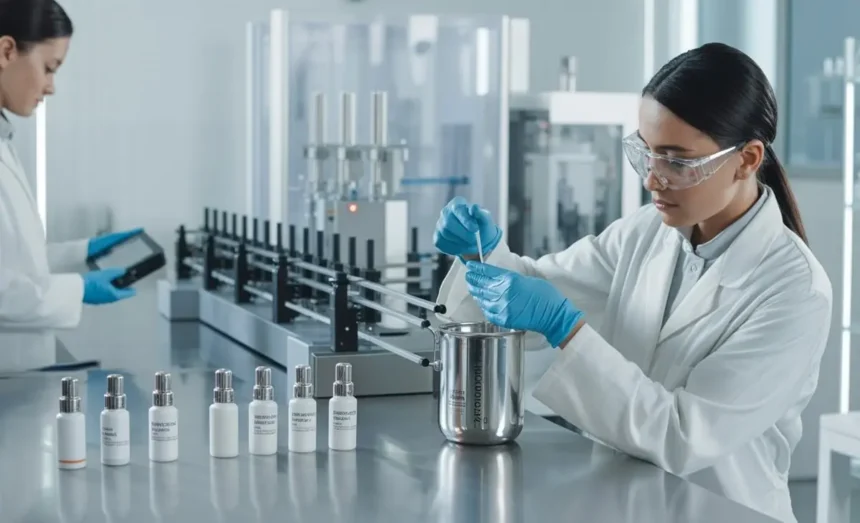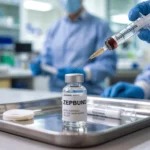The skincare industry is booming worldwide. From luxury serums to natural body lotions, the demand for high-quality products continues to rise as consumers become more conscious about health, beauty, and sustainability. For entrepreneurs, launching a skincare line can be a lucrative opportunity. Yet, safety and compliance are critical from day one. Poor manufacturing practices or oversight can harm consumers, damage reputations, and invite regulatory penalties. If you are considering entering this industry, here’s how to start manufacturing skincare products safely and responsibly.
Research and Understand Regulations
Every region has strict regulations around cosmetic and skincare products to ensure consumer safety. Before mixing ingredients, it’s essential to study the legal framework in your target market.
- European Union: Skincare products fall under Regulation (EC) No. 1223/2009, which requires safety assessments, proper labeling, and maintaining a Product Information File (PIF).
- United States: The Food and Drug Administration (FDA) regulates cosmetics under the Federal Food, Drug, and Cosmetic Act. Manufacturers are responsible for product safety, labeling, and avoiding unapproved drug claims.
- Other regions: Canada, Australia, and Asian markets also enforce specific compliance frameworks that must be followed.
Failing to comply can lead to product recalls, legal action, or being barred from selling. Start with a strong understanding of the rules before creating formulas.
Choosing Safe and Effective Ingredients
Consumers are more ingredient-savvy than ever, reading labels carefully before making purchases. Ingredient safety is non-negotiable in skincare manufacturing.
- Use raw materials from reputable suppliers who can provide Certificates of Analysis (COAs).
- Avoid restricted or banned substances — regulations publish lists that must be checked regularly.
- Test for allergens, contaminants, and heavy metals.
- Ensure the formula balances effectiveness with safety; active ingredients should be present at proven, safe concentrations.
Clear transparency about ingredients also helps build consumer trust and brand credibility.
Setting Up a Safe Manufacturing Environment
Manufacturing skincare products requires a clean, controlled environment that follows Good Manufacturing Practices (GMP). These practices ensure consistency, safety, and hygiene across every batch.
Key steps include:
- Establishing separate zones for raw materials, mixing, and packaging.
- Training staff in sanitation protocols.
- Using equipment made from materials that do not react with ingredients.
- Keeping detailed logs of every batch for traceability.
Skincare is used directly on the skin, so even small lapses in cleanliness can cause contamination or irritation.
Quality Control and Product Testing
Quality control is the backbone of safe skincare manufacturing. Every formula must undergo rigorous testing before reaching consumers.
- Stability testing confirms that the product maintains its effectiveness and safety over time.
- Microbiological testing ensures the product resists harmful bacterial or fungal growth.
- Preservative efficacy testing (challenge testing) validates that the formula remains stable once exposed to air or skin contact.
- Safety assessments carried out by qualified toxicologists confirm that the product is suitable for its intended use.
Without thorough testing, even well-formulated products can pose risks.
Packaging Safety and Integrity
Packaging is more than just design — it protects the product from contamination and degradation. Containers must be compatible with the formula, preventing reactions or leaks. Packaging should also be tamper-evident to reassure customers that products have not been altered.
One crucial but often overlooked aspect is ensuring that seals and closures are secure. Even minor leaks can compromise product safety and shorten shelf life. Tools like a Seal-check package leak detector help manufacturers verify packaging integrity, preventing costly recalls and protecting brand reputation.
Clear and Compliant Labelling
Labels serve two purposes: marketing and compliance. Regulatory authorities require that skincare labels include:
- Full ingredient list using International Nomenclature of Cosmetic Ingredients (INCI) names.
- Net weight or volume of the product.
- Expiration date or period-after-opening symbol.
- Usage instructions and any required warnings.
- Manufacturer or distributor details for accountability.
Accurate labeling not only avoids legal trouble but also builds consumer confidence by demonstrating transparency.
Building Consumer Trust Through Transparency
In the age of social media and online reviews, transparency has never been more important. Brands that openly share details about sourcing, testing, and sustainability attract loyal customers.
- Publish testing results or certifications on your website.
- Highlight eco-friendly practices like recyclable packaging or cruelty-free testing.
- Share behind-the-scenes looks at your process to show commitment to safety and quality.
Trust is a long-term investment that pays off with customer loyalty and strong word-of-mouth recommendations.
Balancing Innovation with Responsibility
The skincare industry thrives on innovation — new active ingredients, delivery systems, and textures constantly enter the market. However, innovation must always be balanced with responsibility. Novel ingredients or formats should undergo extra scrutiny to ensure they are safe and effective. Rushing products to market without proper testing risks not only regulatory issues but also harm to consumers.
When to Seek Professional Help
Starting a skincare manufacturing business is complex, and very few entrepreneurs succeed alone. Partnering with experts can streamline the process and help avoid costly mistakes.
- Consultants can advise on regulatory requirements and product registration.
- Laboratories provide testing and safety assessments.
- Packaging specialists ensure functionality and compliance.
- Manufacturing partners with GMP certification can handle production at scale.
Bringing in professional support ensures your business is built on solid, safe foundations.
Conclusion
Starting a skincare manufacturing business offers immense potential, but only if safety and compliance are at the heart of your operations. From choosing high-quality ingredients to ensuring packaging integrity, every step must be handled with precision and care. Regulations provide a framework, but it’s up to businesses to go above and beyond to protect their customers.
By prioritizing quality control, using tools like a Seal-check package leak detector for packaging safety, and committing to transparency, entrepreneurs can launch skincare brands that stand out for the right reasons. In this industry, safety isn’t just a requirement — it’s the foundation of long-term success.







